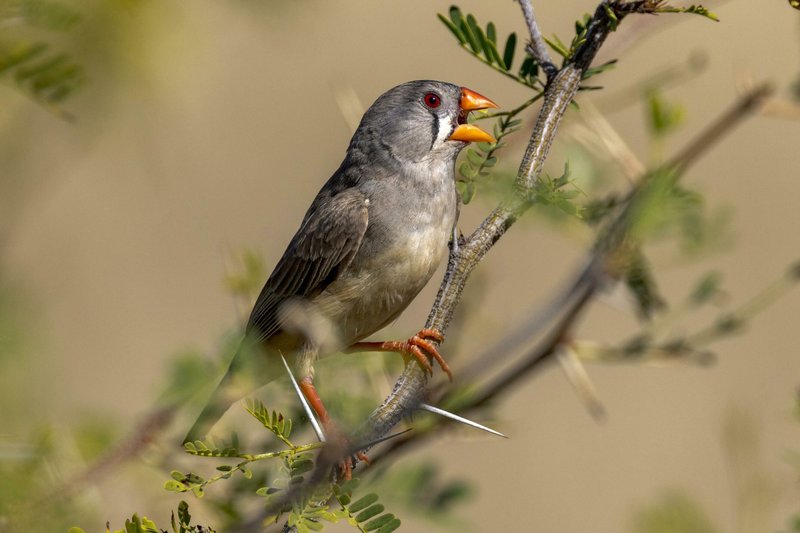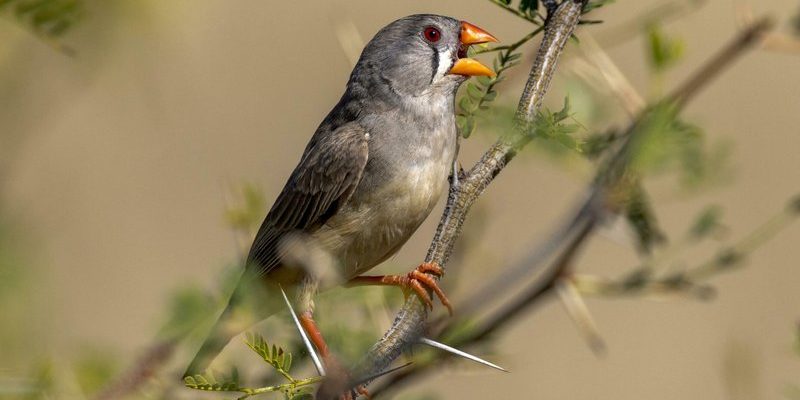
Imagine watching a tiny, feathered acrobat performing daring stunts in the sky. That’s the zebra finch for you! Their flying skills aren’t just for show; they play a crucial role in how they find food and avoid predators. Let’s dive into the unique flying and hunting techniques of the zebra finch, and explore what makes these charming little birds so special.
The Zebra Finch’s Incredible Flight Ability
Zebra finches are no ordinary fliers. These small birds are equipped with powerful wings that allow them to navigate swiftly through various environments. Their flight patterns are a blend of agility and precision, which they use to evade predators and search for food.
One notable aspect of their flight is their fast, darting movements. This isn’t just for show; it’s a survival tactic. When a zebra finch senses danger—a hawk, for example—it can quickly change direction and dart away. Think of them like little fighter jets, capable of sudden turns and aerial maneuvers that keep them safe.
Another incredible feature is their ability to fly long distances. Zebra finches often travel in small flocks, which helps them communicate and stay alert to threats. They can cover significant distances in search of food or suitable nesting spots. This instinctive behavior showcases their adaptability and teamwork, making them not just resilient but also intelligent birds.
Hunting Techniques: Foraging for Food
When it comes to hunting for food, zebra finches have some unique strategies. These birds primarily eat seeds, but they also enjoy fruits and insects. Their foraging technique is straightforward yet effective. They hop around on the ground, using their keen eyesight to spot food.
You might wonder, how do these little birds know where to find seeds? Zebra finches have excellent memory, which allows them to remember where they have previously found food. This ability helps them revisit those spots, improving their chances of finding a meal. Seeing a zebra finch hop energetically in search of seeds in the grass really drives home the idea that their life is a constant treasure hunt.
In addition, they employ a technique called “scratching.” When searching for food, zebra finches will scratch the ground with their feet to uncover hidden seeds. It’s a simple yet effective way to gather food in their environment, showcasing their resourcefulness.
The Role of Social Behavior in Foraging
You might be surprised to learn that social behavior plays a significant role in how zebra finches hunt. These birds are highly social creatures and often forage in groups. When one finch spots food, it usually calls out to its companions, alerting them to the find.
Foraging in groups has several advantages. For one, it helps enhance the safety of the birds. With many eyes scanning the surroundings, they are less likely to fall prey to predators. Plus, they can take turns watching for danger while others eat. It’s like a team effort, working together to ensure everyone stays fed and safe.
Interestingly, zebra finches also communicate while foraging. They use various calls and chirps to signal their findings. This vocal communication is essential for maintaining harmony within the flock and ensuring that all members can benefit from each food source.
Aerodynamics: The Science Behind Their Flight
Let’s get into the nitty-gritty of what makes zebra finches such excellent fliers. Their aerodynamics is fascinating. The shape of their wings, combined with their lightweight bodies, allows them to maneuver easily through the air.
You might picture a plane flying smoothly through the sky, navigating winds effortlessly. Zebra finches do something similar! Their wings are structured to minimize drag, which means they can fly faster and longer without exhausting themselves. It’s all about creating that balance between thrust and lift.
Additionally, zebra finches employ a flapping motion that optimizes their energy use. They alternate between flapping and gliding, which conserves energy during longer flights. This balance allows them to traverse vast distances in search of food and mates, a crucial factor in their survival.
Predator Evasion Tactics
For zebra finches, flying isn’t just about getting from point A to point B—it’s also about survival. They face threats from various predators, including hawks and cats, so their flying and hunting techniques include clever evasion tactics.
One of their main strategies is the “startle response.” When a predator approaches, zebra finches will suddenly take off in different directions, making it difficult for the predator to target a single bird. This quick decision-making resembles an intricate dance, where the flock moves together yet apart, increasing their chances of escape.
They also utilize cover in their environment. When flying or foraging near potential predators, zebra finches will stay close to shrubs or grass. Being near cover provides them with an escape route and a chance to hide if necessary. This behavior underscores their instincts for self-preservation and teamwork.
The Importance of Learning from Each Other
One unique characteristic of zebra finches is their ability to learn from their peers. Young finches, especially, benefit from observing the more experienced members of their flock. This learning process is critical for developing their flying and hunting techniques.
Imagine a child learning to ride a bike by watching an older sibling. Zebra finches do something similar! Juvenile finches watch how adults catch food and evade predators, gradually picking up skills over time. This learning process enhances the entire flock’s hunting efficiency, ensuring that everyone can contribute to finding food.
It’s not just about instinct; zebra finches combine innate behaviors with learned strategies. This blend of learning and experience helps them adapt to changes in their environment, making them resilient little birds.
The zebra finch is more than just a beautiful little bird; it’s a remarkable creature with intricate flying and hunting techniques. From their agile flight patterns and clever foraging methods to their social behavior and learning abilities, they showcase the wonders of nature in everyday life.
In observing zebra finches, we can learn about teamwork, resourcefulness, and adaptability. These little birds remind us that there’s always more to discover, whether in their aerial acrobatics or their charming social habits. So next time you see a zebra finch flitting about, take a moment to appreciate the incredible skills that make them such unique creatures in the avian world.

